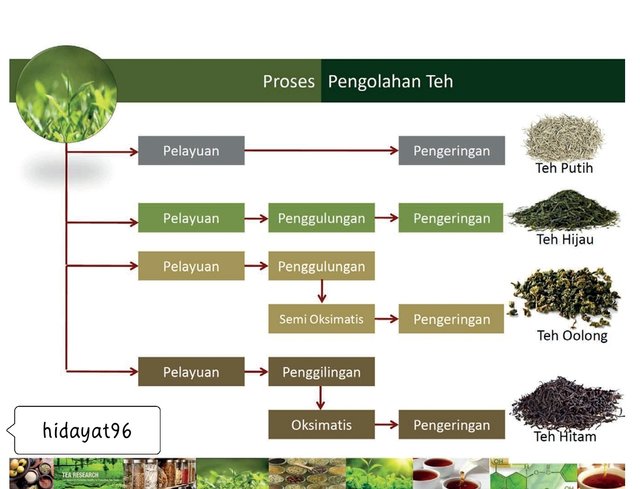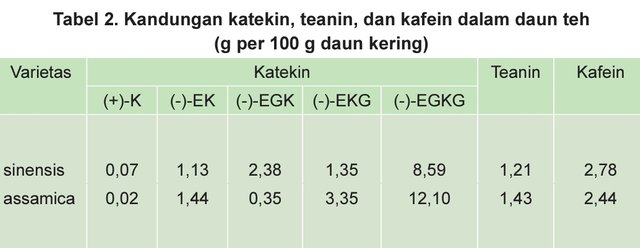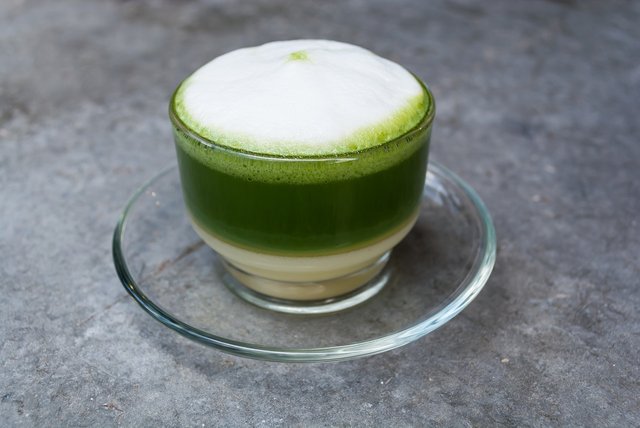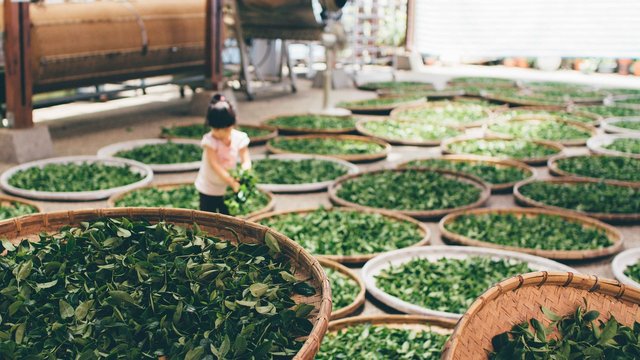SIZ Contest | Our Education About Green Tea and Its Benefits by @hidayat96
Assalamu'alaikum
Good afternoon Steem Infinity Zone friends. Meet me again @hidayat96 and on this occasion I will take part in a contest held by @siz-official about "Our Education on Green Tea and Its Benefits".
Here is the contest link: https://steemit.com/hive-181430/@siz-official/siz-official-contest-eduacte-us-about-green-tea-and-it-s-benefits
Processes, Their Characteristics & Functional Components
Tea, no matter what kind it always invites admiration. Not only for the audience because of its attractive taste and aroma, tea has also been able to make researchers fascinated by it.
Tea also has the character of quality and potential biological activity. Recent publications seem to be an acclamation to strengthen the superiority of tea as a health care provider. So it is not surprising that the world community has positioned tea as the second drink after water.
Tea Processing.
Based on the processing process, the types of tea can be divided into non-fermented tea (white tea and green tea), semi-fermented tea (oolong tea), and fermented tea (black tea). Later the term fermentation became less popular and was changed to the more appropriate term, namely Enzymatic Oxidation or abbreviated as Oximatis. The following is a simple tea processing chart, please see the image below.

All types of tea are produced from the same raw material, namely from the tea plant or Camellia sinensis. Commercially cultivated tea plants consist of the main varieties, namely Camellia sinensis (L.) O. Kuntze var. sinensis and Camellia sinensis (Master) Kitamura var. assamica. Camellia sinensis (L.) O. Kuntze var. sinensis has good resistance to cold and hot weather. This variety is widely cultivated in China and Japan to make green tea. While the variety Camellia sinensis (Master) Kitamura var. assamica has better productivity and quality. This type of variety is widely cultivated in tea producing countries such as India, Sri Lanka, Kenya and Indonesia. The main chemical comparison of the two can be seen in the image below.

White Tea.
Among the existing types of tea, white tea or white tea is a tea with the simplest processing process, namely by withering and drying. The raw materials used for the process of making this white tea only come from the shoots and the two leaves below. Withering can be done by utilizing the heat from the sun. Usually this process is able to reduce the water content up to 12%. Next, the wilted tea leaves are dried using a dryer. The top of the tea will then become a type of silver needle quality, while the two leaves below will become white poeny.
Green tea.
Green tea is generally divided into Chinese green tea (Panning Type) and Japanese green tea (Steaming Type). Both Chinese and Japanese green teas, the basic principle of the processing process is the inactivation of the polyphenol oxidase enzyme to prevent the occurrence of oxymatis which converts into its oxidation compounds in the form of theaflavin and thearubigin.
In the Chinese green tea processing process, a withering machine in the form of a rotary panner is used to inactivate the enzyme. Meanwhile, the Japanese green tea process uses a steamer to inactivate its enzymes. Withered tea leaves, then rolled and dried to a certain moisture content.
Oolong Tea.
After arriving at the factory, the tea leaves are immediately wilted by utilizing the heat from the sun while being finely rolled manually by hand or using a machine. The purpose of the rolling is to oxidize some of the polyphenols contained in the tea leaves. This process is known as the semi-oximatic process. After it is considered semi-oxymatic enough, then the tea leaves are dried.
Black Tea.
Compared to other types of tea, black tea is the most widely produced tea, which is about 78%, followed by green tea with 20%, then the rest is Oolong tea and white tea, which is 2%. Black tea is also a tea with a fairly complicated processing process. Based on the process, black tea is divided into orthodox black tea and crushing-tearing-curling (CTC). In orthodox black tea processing, the tea leaves are withered for 14-18 hours. After wilting, the tea leaves are rolled, ground and oxidized for about 1 hour. Meanwhile, the processing of CTC by withering is shorter, namely 8-11 hours and is followed by a very strong grinding process to remove the cell fluid as much as possible.
The next process is drying, which is a processing process that aims to stop the Oximatic process and reduce the water content. The dry tea is then sorted and graded to produce a certain type of tea quality.
Quality Characteristics.
In practice, the tea taster can quickly determine the quality of tea on the color, aroma and taste of steeping. This assessment is of course still subjective and prioritizes the experience of the tea taster. To reduce the above subjectivity, tea quality assessment is now balanced with a more scientific approach using instruments. The green color of green tea and oolong tea, for example, is strongly influenced by the content of chlorophyll A. The brown and black colors of black tea are strongly influenced by the presence of feofirbid and pheophytin. Meanwhile, in brewing black tea, the bioactive components that play a major role are theaflavins, tearubigin, flavonols and their glycosides. The characteristic of tea quality that is also easily recognizable is aroma. Aroma is a critical aspect in quality that can determine whether the tea is accepted or not by consumers.
Chemically, more than 630 components are involved in the formation of tea aroma. Some of them are known for their contribution, such as linalool and geraniol. To be consumed, the tea must first be brewed using hot water. This steeping then becomes the most important part in assessing the quality characteristics of tea. The ratio between polyphenols and caffeine is said to be the most important factor in determining the quality of a tea. For more details, the bioactive components and their role in the quality characteristics of tea can be seen in the table below.
Color
| Bioactive Components | Quality Characteristics |
|---|---|
| Chlorophyll A | Dark green (dried tea) |
| Chlorophyll B | Yellowish green (dried tea) |
| Feoforbid | Chocolate (dried tea) |
| Feophytin | Black (dry tea) |
| Teaflavin | Yellowish red |
| Tearubigin | Sorrel |
| Flavonol glycosides | Yellow |
| Carotene | Yellow |
Scent
| Bioactive Components | Quality Characteristics |
|---|---|
| Linalool, Linalool Oxide | Sweet |
| Geraniol, Phenylacetaldehyde, | Froral |
| Nerolidol, Benaldehyde, Methylsalicylate, Phenyl ethanol | Fruity |
| Trans-2-hexenal, n-Hexenal, cis-3-Hexonal, Grassy, B-lonon | Fresh Flavor |
Flavor
| Bioactive Components | Quality Characteristics |
|---|---|
| Polyphenols, theaflavins | Astringent |
| Amino acids | Brothy |
| Caffeine | Bitters |
| Teaflavins | Astringent |
| Caffeine + theaflavin | Briskness |
| Tearubigin | Ash |
Functional Components
Tea, no longer only acts as a beverage that publishes pleasure, but more than that, now the popularity of tea is growing in line with the increasing number of publications stating that tea is also able to increase one's health accreditation.
Talking about the health aspects of tea, it's incomplete if we don't talk about polyphenols and catechins. A number of publications confirm that polyphenols and their catechins play an important role as antioxidants, anti-cancer, anti-diabetic, anti-heart disease and anti-a number of other degenerative diseases. Likewise with caffeine, the bioactive contributor to the bitter and fresh taste of this tea also has anti-uric acid activity. Although previously it was feared that its presence could increase uric acid levels, it turns out that recent publications state that caffeine can inhibit the formation of uric acid in the blood.
Caffeine (trimethylxanthine) will compete with xanthine which is naturally present in the body to react with xanthine oxidase, a biocatalyst for the formation of uric acid. This competition between caffeine and xanthine causes the formation of uric acid in the blood to be reduced. Therefore, caffeine has been named as a competitive inhibitor of uric acid formation. Of course, each type of tea contains very varied bioactive components. You can see the content of the bioactive components of each type of tea in the table below.
| Components (% w/w | White tea | Green tea | Oolong tea | Black tea |
|---|---|---|---|---|
| Total polyphenols | 21.54 | 19.18 | 17.6 | 16.5 |
| Total catechins | 13.22 | 12.95 | 10.3 | 4.2 |
| Caffeine | 4.85 | 3,4 | 3.7 | 3.5 |
| Gallic acid | nd | 0.95 | nd | 0.26 |
| Theaflavins | nd | nd | nd | 0.94 |
Chemically, the higher the content of bioactive components in tea, the higher the activity. But there is an important thing to remember, that in the body the mechanism that occurs is not chemical, but rather a biochemical mechanism. At certain doses, the bioactive components can be antioxidants, but at other doses the same bioactive components can be pro-oxidants. Indeed, there is not a single plant that is completely safe on the surface of this world. However, the publications regarding the positive effects of tea far outnumber the negatives. And empirical experience supported by scientific research, tea is a healthful pleasure drink.
Are you a fan of green tea drinks? The special pleasures and benefits of green tea make this tea variant have long been consumed by people around the world, including Indonesia. In addition to being a delicious and refreshing dish, green tea turns out to have natural goodness that is very beneficial for our bodies. Here I will discuss some of the benefits that we can get from green tea.
1. Heart health is maintained.
Green tea is known to contain Epigallocatechin Gallate (EGCG) which is very useful for maintaining our heart health. L By consuming green tea regularly, the risk of heart blockage due to cholesterol can be minimized, because the condition of our blood vessels will be healthier and blood sugar levels are relatively stable.
2. Our joints are always healthy
Research conducted by the University of Michigan states that green tea is also known to be able to make joints in the body always healthy by preventing the formation of molecules that cause rheumatism and joint inflammation in the body.
3. Free from Insomnia
Green tea is also known to be useful for helping us reduce insomnia by maximizing blood and oxygen flow to the brain, so that our brain becomes easier to relax and we become easier to sleep.
4. Can control weight stability
Green tea is also known to be widely consumed when dieting. This is because green tea can help optimize the body's metabolism, so the risk of fat accumulation in the body can also be minimized.

Maybe this is all I can say. In the end let me say thank you. Hope it is useful.
See you in my next post.
About me

Special thank to:
@cryptokraze
@siz-official
@vvarishayy
@suboohi






Great job 👍Thanks for your participation. Best of luck for the contest.
Thank you very much for your kind response @suboohi :)
this is the magic of the tea content. I just saw that green tea is real. , it sure tastes good
Tentu rasanya enak sekali, saya baru saja meminumnya 😊
Segar, wenak tenang
Mantap, saya juga menyukai teh hijau...
Postingan anda membuat saya ingin keluar untuk langsung mencarinya 😃
Hehehe
Wow amazing dear friend you make a very good post thanks for sharing information about green tea.
Your post is very well detailed.
Keep it up bro my best wishes for you.
@vvarishayy
#sizcomments
@faran-nabeel
https://steemit.com/hive-181430/@siz-official/siz-commenting-contest-let-s-incourage-others-by-apreciating-their-work
Thank you so much for your support for me @faran-nabeel. Wish us always success in this community 😊
very detailed and nice information iin one post. Thanks for educating the community
great job. much detailed information in such a great and explained way
Such a amazing post . Keep it up .